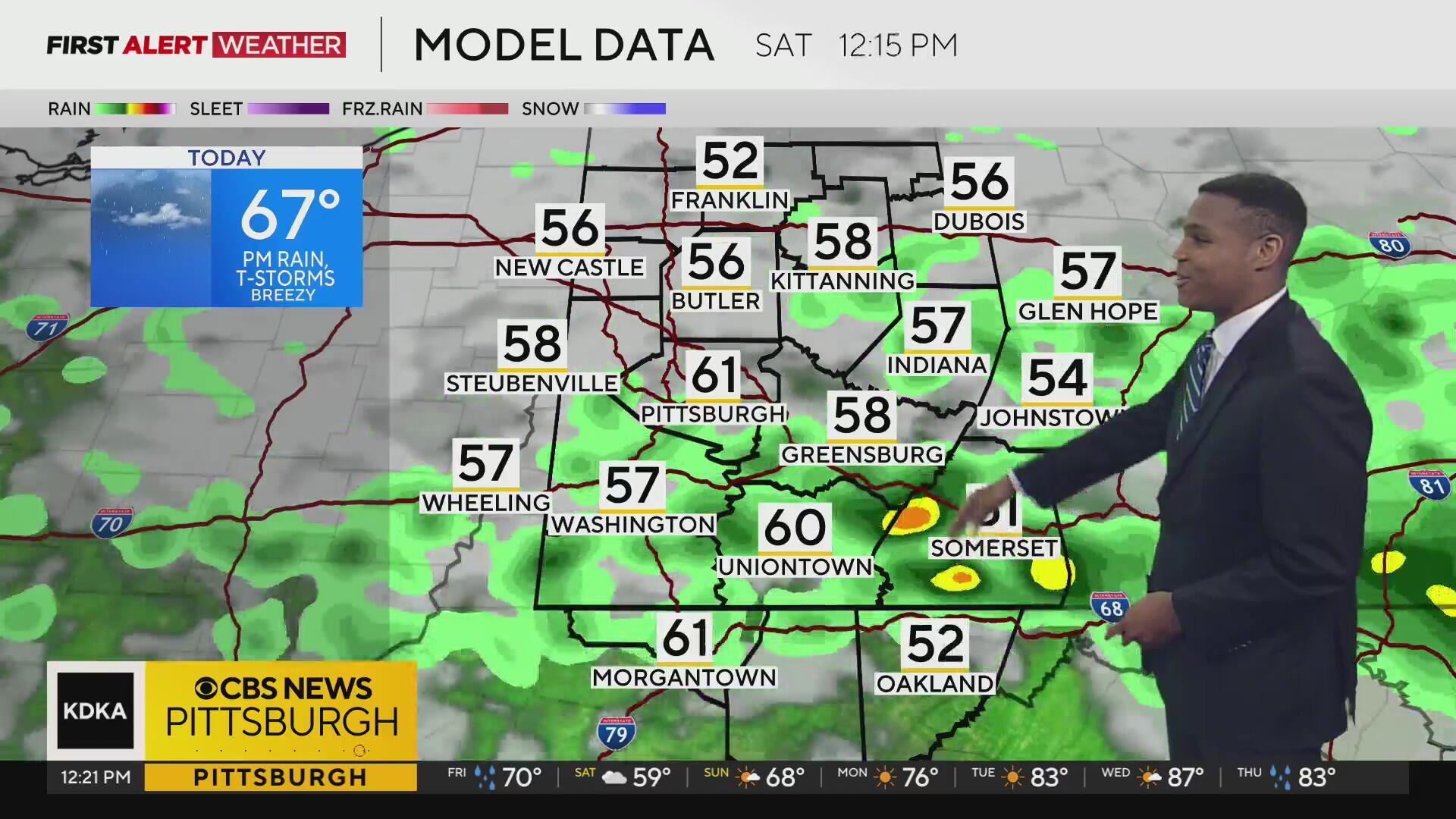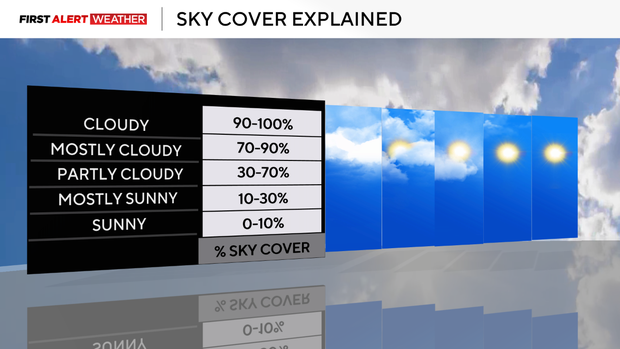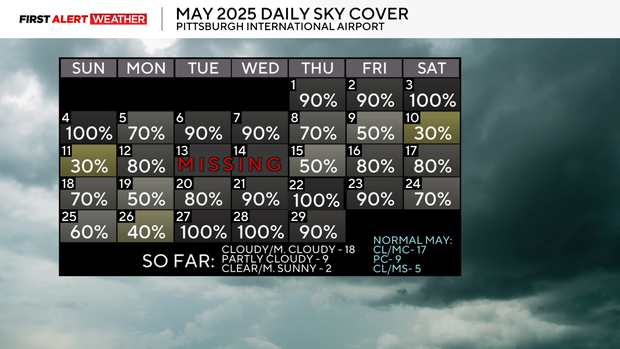Pittsburgh has been cloudier than normal this month. Here's how many sunny days there were. - CBS Pittsburgh
/ CBS Pittsburgh
KDKA-TV Afternoon Forecast (5/30)

If you're thinking Pittsburgh hasn't gotten much sun this month, you'd be right.
Over an entire year, Pittsburgh averages 59 clear or mostly clear days, 103 partly cloudy days and 203 cloudy or mostly cloudy days, according to the National Centers for Environmental Information.
With the average number of cloudy days outnumbering the clear days, it's no surprise that Pittsburghers try to take advantage of the few clear days we get. While most look forward to bright late spring and summer days, this month has not really offered much of that.

Through May 29, Pittsburgh has seen 18 cloudy or mostly cloudy days, nine partly cloudy days and only two mostly sunny or completely sunny days. Note two days of climate data on the calendar from May 13 and 14 are missing, but looking at past hourly observations, we can clearly infer that May 13 and 14 leaned mostly cloudy to cloudy.
While Pittsburgh is certainly used to being a cloudy city, this month has been cloudier than average. Normally, May averages 17 cloudy or mostly cloudy days, nine partly cloudy days, and five mostly sunny or sunny days. It is likely that May 30 and 31 will be counted as mostly cloudy or cloudy, pushing the total number of cloudy days for May 2025 to 20, which is above normal for Pittsburgh.

Western Pennsylvania is one of the cloudiest regions in the country due to the geography of the region. Being downwind the Great Lakes means that clouds are more likely to form, especially during the fall and winter months when cold air blows over relatively warm lake waters, creating instability, lift and cloud formation.
Moisture rising upslope the hilly terrain and westward facing sides of the Laurel Highlands also contributes to cloud development.
Finally, big areas of low pressure often like to settle just north of Pittsburgh over the Great Lakes up toward Hudson Bay in Canada, which keeps unsettled weather in our region for longer periods of time. Being far removed from the Rockies and Desert Southwest prevents us from getting longer intrusions of dry air which help states to our west see a greater number of clear days on average.












